Roof Leak Signs in WV
Contents
Did you know that 90% of roof leaks start at flashings? For West Virginia homeowners, spotting roof leaks early is critical to avoid costly water damage, mold, and structural issues. With 35–45 inches of annual rainfall, roofs in West Virginia are at constant risk. A simple roof inspection can help catch minor issues before they escalate.
This guide explains how to perform a residential roof leak inspection, identify hidden leak signs, and decide when to call a professional roofing contractor. Prevent roof damage, protect your home’s integrity, and save thousands in repairs by learning how to detect roof leaks before it’s too late.

Early Signs Your Roof May Be Leaking
Recognizing the early warning signs of a roof leak can help you take action before extensive damage occurs. Spotting these telltale indicators allows you to identify roof leaks quickly, potentially saving thousands in repair costs. Let's explore what a roof leak looks like in its early stages and the hidden signs of a roof leak.
Ceiling stains and water spots
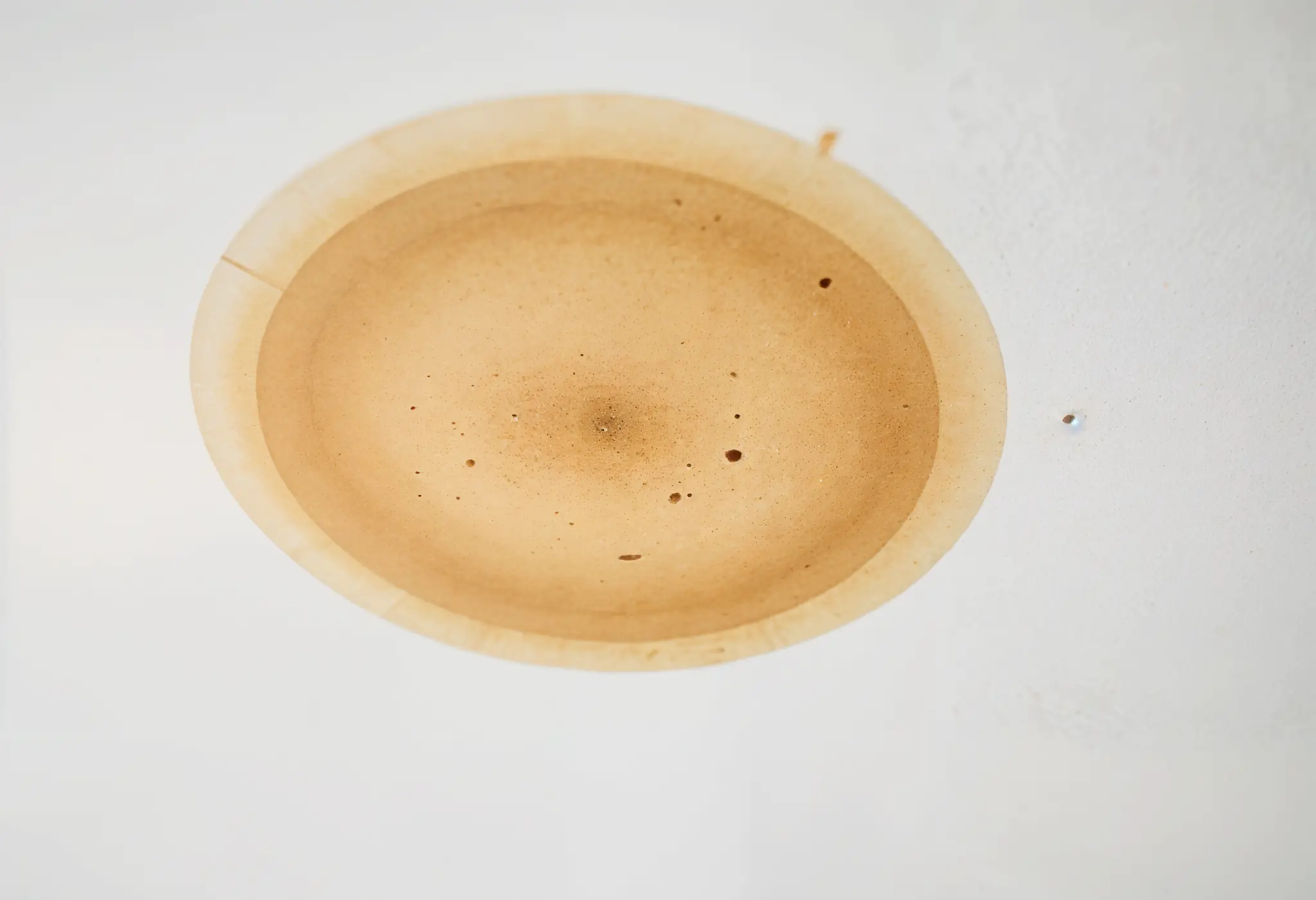
Water stains on your ceiling or walls are classic indicators of a leaky roof. These discolorations typically appear as brownish or yellowish rings with darker edges, resembling tea or coffee stains. Furthermore, these stains often become visible after heavy rainfall. If you notice these marks, it's critical to investigate rather than simply painting over them - covering the stain without addressing the source will only lead to more moisture damage.
Look for these characteristics:
- Circular or irregularly shaped discolored patches
- Stains that expand or spread over time
- Changes in color intensity, indicating active leaks
Peeling paint or bubbling walls
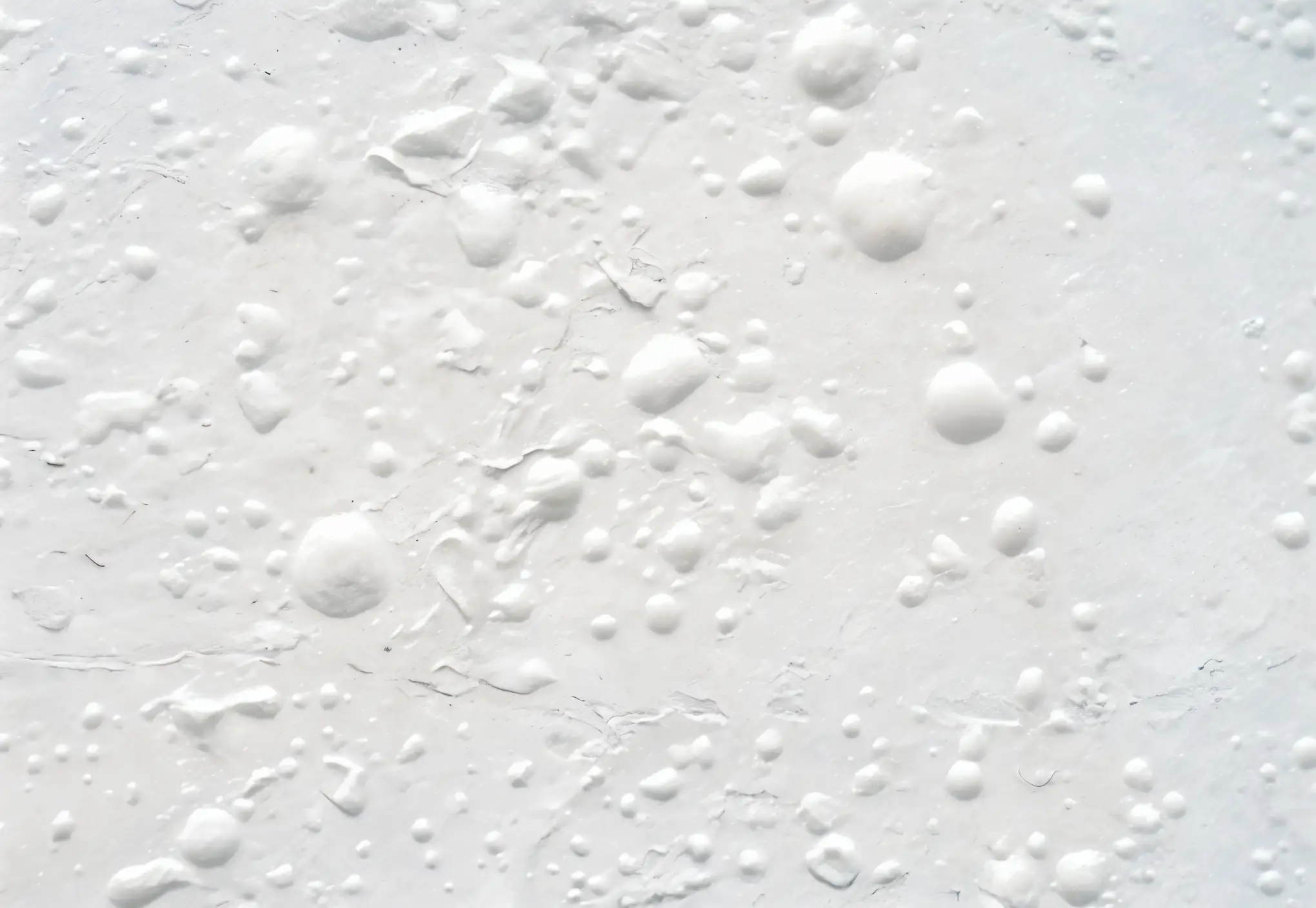
When moisture seeps through your roof and into your walls, it weakens the adhesive properties of paint and wallpaper. Indeed, peeling paint or bubbling wallpaper often indicates that water has penetrated your home's exterior. This happens because water gets trapped behind the paint layer, causing it to separate from the wall surface.
Ignoring these bubbles can lead to structural damage within your walls. In severe cases, wooden components may begin to rot, compromising your home's integrity.
Mold or mildew smells in attic
A musty, earthy odor in your attic is a strong indicator of a roof leak. This happens because roof leaks create damp environments where mold and mildew thrive. Essentially, poor ventilation combined with moisture from leaks creates the perfect conditions for fungal growth.
This issue extends beyond unpleasant smells - mold growth can lead to serious health problems, especially for those with allergies or compromised immune systems. If you detect these odors, they'll likely become more pronounced during or after rainfall.
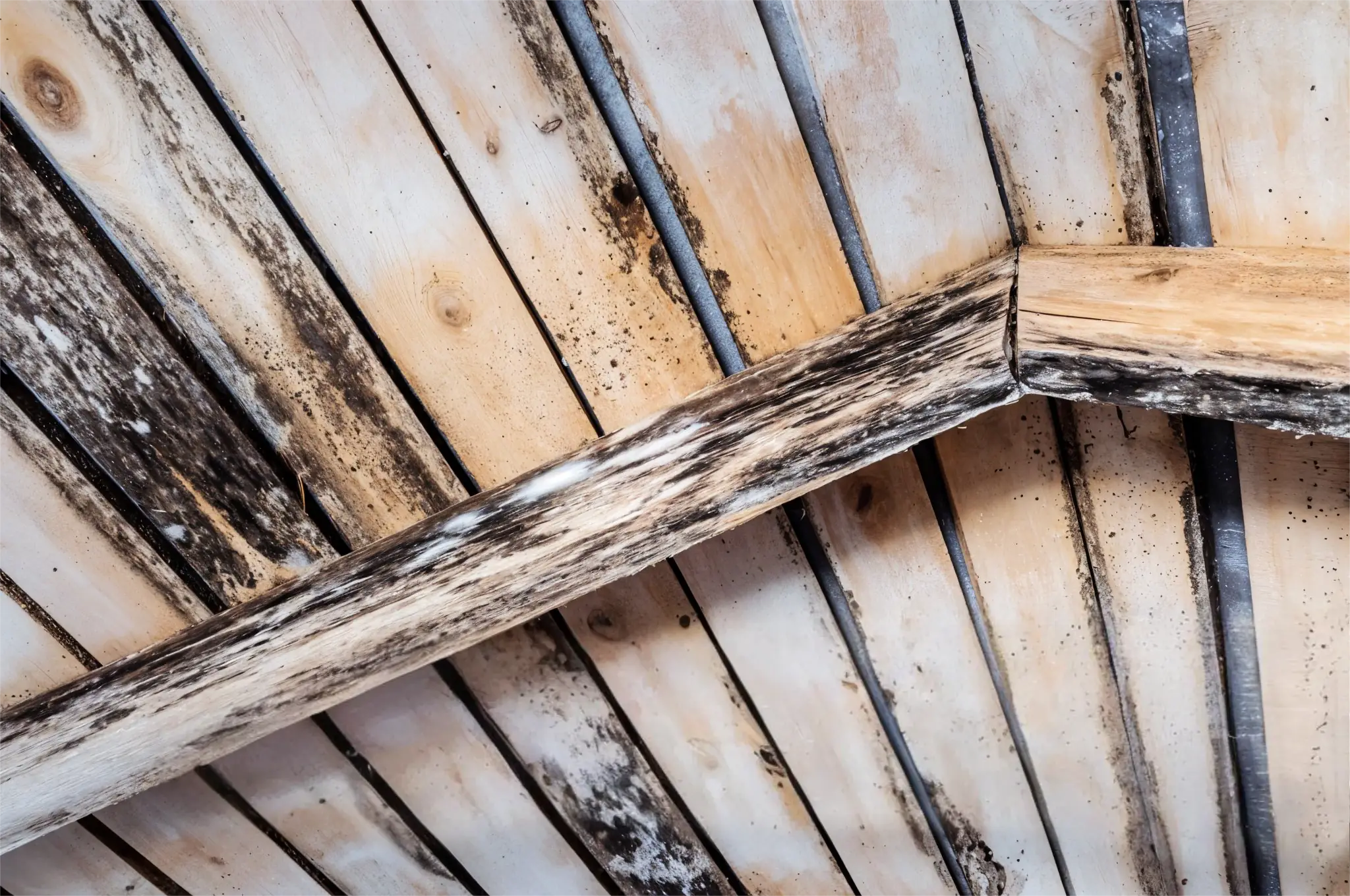
Visible light through attic boards
Perhaps the most obvious sign of roof damage is visible daylight peeking through your roof boards when you're in the attic. This indicates gaps or holes in your roof structure that require immediate attention. During an attic inspection, turn off the lights and look for any streaks of sunlight coming through.
These light penetrations signal that your roof's structural integrity is compromised. Generally, where light can enter, so can water during the next rainfall.
Hidden Problems That Lead to Roof Leaks
While visible signs alert you to existing leaks, understanding the hidden culprits can help you prevent water damage altogether. These underlying issues often develop slowly, causing extensive damage long before you notice water dripping from your ceiling. Recognizing these roofing danger signals is crucial for maintaining your roof's integrity.
Poor attic ventilation and moisture buildup
Inadequate attic ventilation ranks among the most common yet overlooked causes of roof problems. When warm, humid air becomes trapped in your attic, it creates condensation that compromises your roof structure. Without proper airflow, this moisture:
- Causes wood rot in rafters and roof decking
- Creates an environment where mold and mildew thrive
- Accelerates the breakdown of roof sheathing over time
During winter, poor ventilation leads to another problem – ice dams. These form when heat from your attic melts snow on your roof, which then refreezes at the colder eave lines.
Rusted flashing or loose roof penetrations
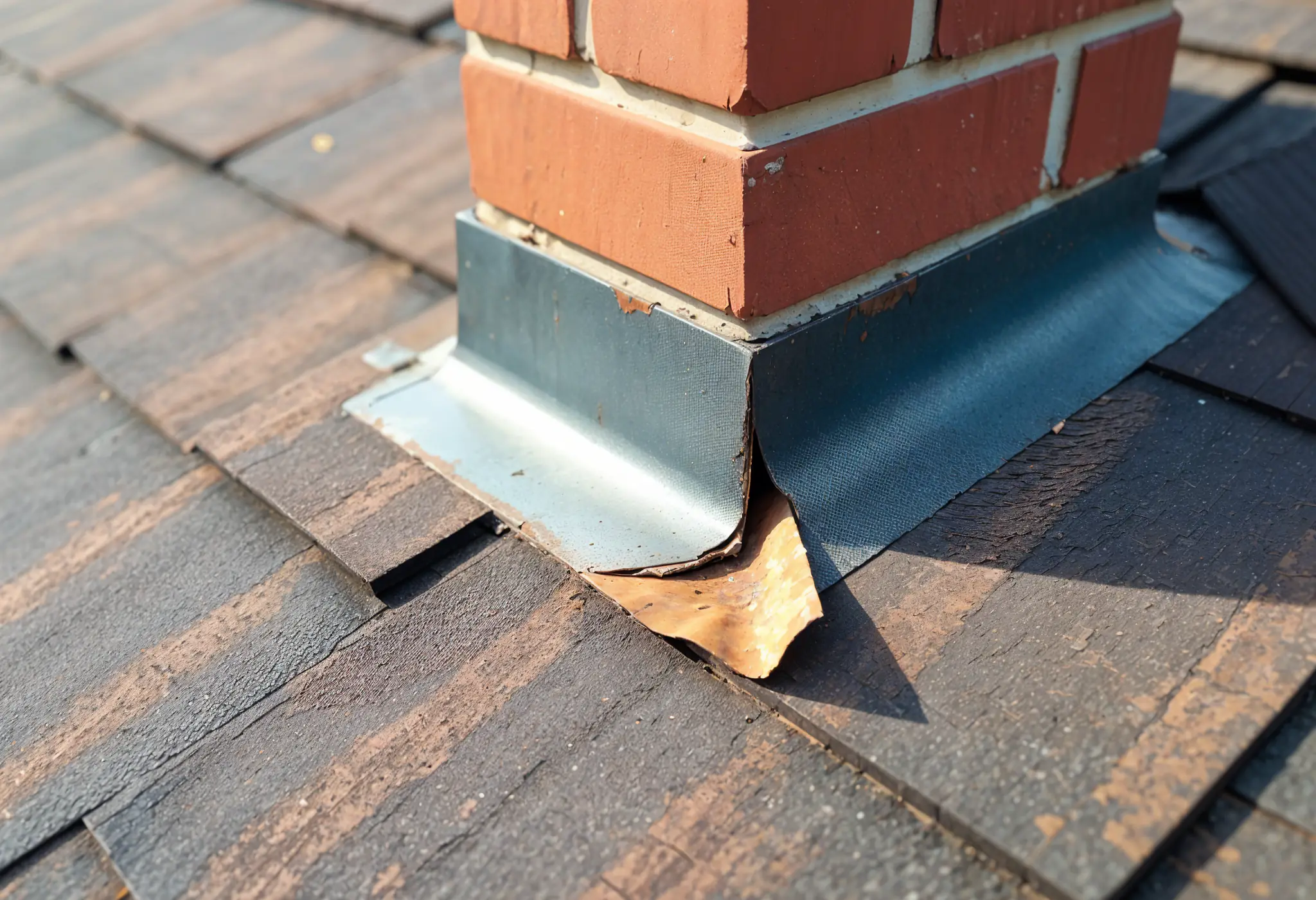
Flashing – the thin metal layers installed around roof penetrations – serves as your roof's first line of defense. Any place where something penetrates your roof represents a potential weak point. Over time, flashing can:
- Rust or corrode, creating gaps where water enters
- Pull away from the roof due to missing nails or failed seals
- Develop cracks from weathering and temperature changes
Clogged gutters causing water backup
Clogged gutters prevent proper drainage, forcing water to back up onto your roof. Subsequently, this standing water seeps under shingles and eventually into your home. Additionally, the extra weight from debris-filled gutters can pull them away from the fascia, creating more entry points for water. Regular gutter system maintenance is crucial for preventing these issues.
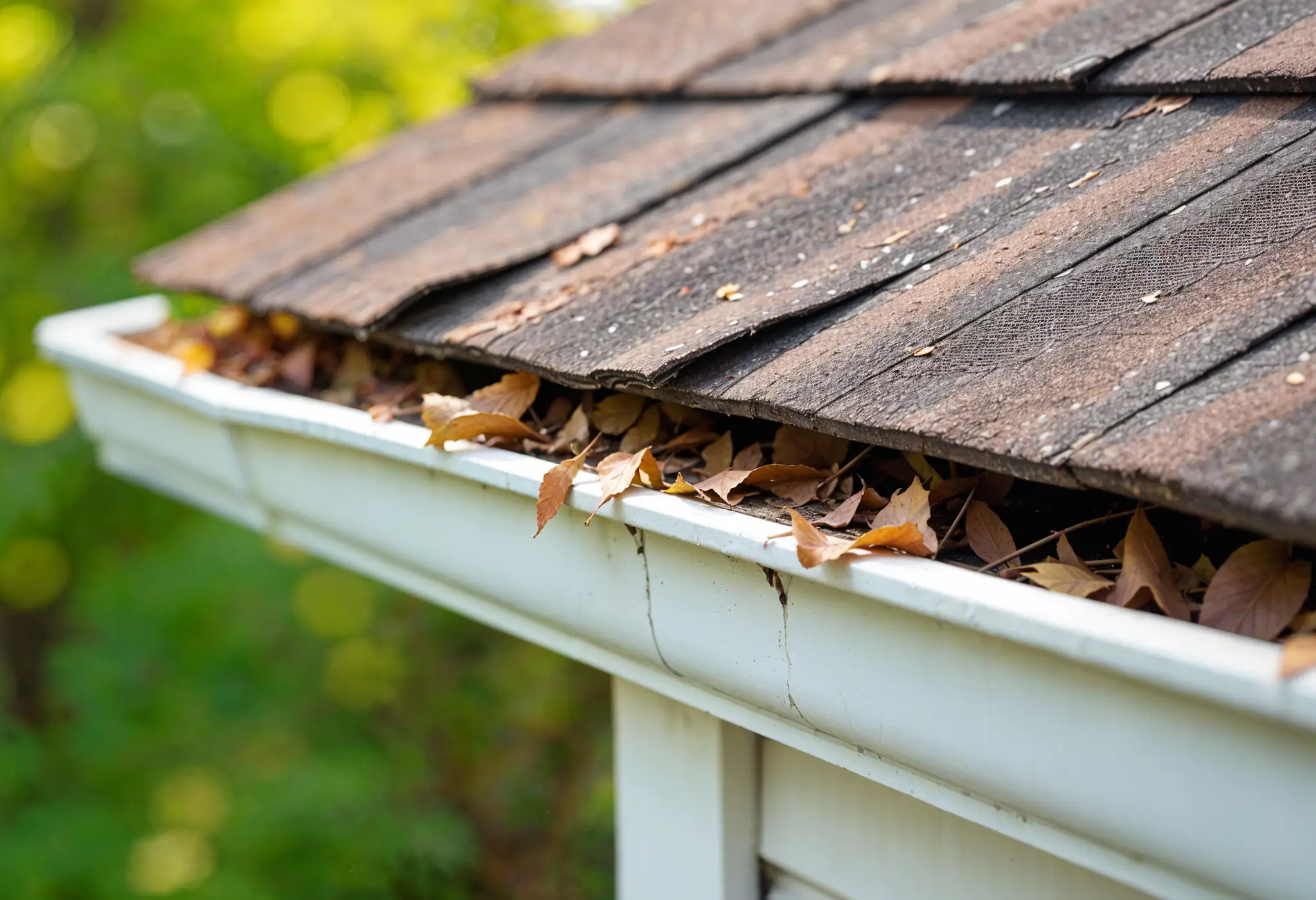
Warped or sagging roof decking
Roof decking – the plywood sheets that form your roof's foundation – can warp or sag when exposed to moisture. Initially, you might notice a wavy appearance on your roof's surface. Likewise, if you see discoloration on the underside of roof decking, you're likely dealing with excess moisture or an unidentified leak. Missing or damaged shingles often indicate localized leaks that, although small initially, gradually weaken your roof's structural integrity.
Don’t wait for stains, mold, or sagging to tell you there’s a problem. Protect your home before the damage starts.
Schedule your FREE roof inspection with My Modern Renovations today—West Virginia’s trusted experts in leak detection and high-quality roof repair. Request Your Free Estimate Now.
How to Find a Roof Leak Step-by-Step
When water appears on your ceiling, the actual leak might be several feet away from the visible damage. Finding a roof leak requires detective work and a methodical approach to pinpoint its exact location. Here are some effective methods on how to tell if your roof is leaking:
Start with an indoor inspection
First, examine your ceiling and walls for water stains, discoloration, peeling paint, or bubbling wallpaper. These visible signs help narrow down the general area of the leak. Next, move to areas where water might collect, such as corners of rooms or around light fixtures. Moreover, don't forget to check closets and other less-visited spaces, as leaks often remain undetected in these areas for longer periods.
Check attic insulation and rafters
Once you've identified potential leak areas from inside your home, head to the attic with a flashlight. Look for:
- Water stains, mold, or dark spots on wooden beams and rafters
- Damp or discolored insulation, which indicates water intrusion
- Sunlight visible through roof boards (turn off attic lights to spot these easily)
Feel the wood for dampness and trace any wet areas to their highest point—water typically travels downward before dripping.
Inspect shingles and flashing from outside
After your indoor investigation, inspect your roof's exterior. Pay special attention to:
- Missing, cracked, or curled shingles
- Damaged flashing around chimneys, vents, and skylights
- Debris accumulation that could trap moisture
For safety, use binoculars from the ground rather than climbing onto the roof if possible. This is especially important for homes with a steep roof pitch.
Use a garden hose test to trace the leak
If visual inspection doesn't reveal the source, conduct a water test. This two-person job requires:
- One person in the attic with a flashlight
- Another person outside with a garden hose
- Start low on the roof, soaking small sections at a time
- Work methodically upward until water appears inside
- Mark the location when the leak is detected
Document damage for insurance or repair
Finally, thoroughly document all findings with:
- Clear photos of interior and exterior damage
- Written notes including dates and details of your observations
- Professional assessment from a qualified roofer if possible
This documentation strengthens insurance claims and helps roofing professionals address the specific problem areas.
When to Call a Roofing Professional
Even experienced DIYers recognize certain roofing situations require professional expertise. While identifying minor leaks yourself can save money, some scenarios demand specialized knowledge and equipment.
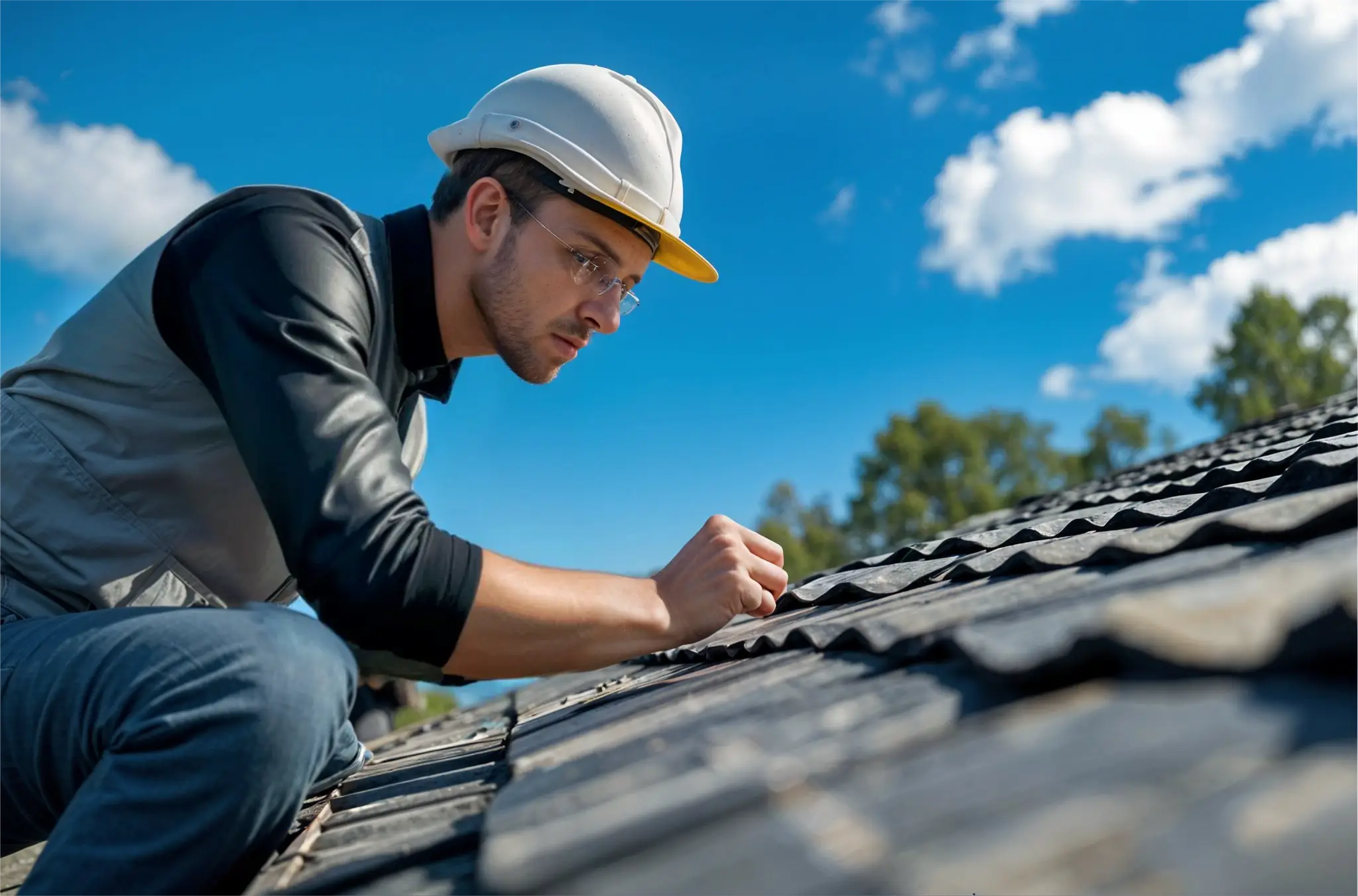
Leaks near chimneys or skylights
Chimney and skylight areas are particularly vulnerable to moisture intrusion. These structures interrupt your roof's natural flow, creating potential weak points where water can enter. The most common cause of chimney leaks is flashing failure – when the metal that wraps around the chimney base lifts or corrodes. Furthermore, brick chimneys can develop problems within the masonry itself as mortar joints erode and crowns crack.
For skylights, leaks typically occur when seals and gaskets degrade over time due to exposure to sunlight and freezing temperatures. Since water may travel along beams before appearing inside, pinpointing these leaks requires professional diagnostic skills.
Multiple shingle layers complicating detection
Homes with two layers of shingles present unique challenges. Finding leaks becomes significantly more difficult because water might penetrate each layer at different locations. The leak may originate on the top layer on one side of your roof and penetrate the bottom layer elsewhere.
Moreover, additional shingle layers mask underlying problems. Issues like rotten roof decking, rusted flashing, and torn underlayment remain undetected when another layer is installed over existing shingles. An extra layer also adds 350-450 pounds per 100 square feet to your roof, potentially compromising structural integrity.
Signs of structural damage or sagging
A sagging roofline indicates severe damage requiring immediate professional attention. This typically occurs when the roof's structure has been compromised by water infiltration. Sagging could result from excess loads, water damage, or a weakened roof structure.
Protect your home with a roof built to last. Schedule your free roofing estimate today and let our experts upgrade your home with durable, high-quality roofing materials and professional installation.
If temporary fixes don't hold
When leaks persist despite your best DIY efforts, it's time to call professionals. Multiple leaks across different roof areas, pooling water, or visible damage to structural elements all indicate the need for expert intervention. Additionally, if you notice mold developing, contact a professional immediately, as mold can pose serious health risks.
Conclusion
Detecting roof leaks early is essential for West Virginia homeowners to avoid major water damage, mold growth, and structural problems. This guide covered early signs like ceiling stains, peeling paint, and musty attic odors, along with hidden issues such as damaged flashing, poor attic ventilation, and clogged gutters. With 35–45 inches of rainfall annually, regular roof inspections are critical. Most roof leaks start small and get worse—early detection means lower repair costs and better protection. While DIY roof inspections are helpful, leaks around chimneys, skylights, or multiple shingle layers require professional help. Your roof protects your home, your family, and your investment—don’t wait until the damage is done.
At My Modern Renovations, we provide expert roof leak detection and professional roofing repairs across West Virginia. Schedule your free roof inspection now—before water damage costs you thousands. Request Your Free Estimate Today.
FAQs
Q1. What are the early signs of a roof leak in my West Virginia home? Early signs include water stains on ceilings or walls, peeling paint or bubbling wallpaper, musty odors in the attic, and visible light coming through roof boards when in the attic. These indicators suggest water intrusion and should be investigated promptly.
Q2. How can I locate the source of a roof leak? Start with an indoor inspection, checking for water stains and discoloration. Then, examine the attic for damp insulation or wood. From the outside, look for damaged shingles or flashing. If needed, use a garden hose to systematically wet roof sections while someone monitors the attic for water entry.
Q3. When should I call a professional roofer instead of attempting DIY repairs? Call a professional for leaks near chimneys or skylights, if your home has multiple shingle layers, when there are signs of structural damage or sagging, or if your temporary fixes don't resolve the issue. These situations often require specialized knowledge and equipment.
Q4. How does poor attic ventilation contribute to roof leaks? Poor attic ventilation can lead to moisture buildup, causing wood rot in rafters and roof decking, creating an environment for mold growth, and accelerating the breakdown of roof materials. In winter, it can also contribute to ice dam formation, further increasing the risk of leaks.
Q5. What role do gutters play in preventing roof leaks? Properly functioning gutters are crucial for directing water away from your roof and home. Clogged gutters can cause water to back up onto the roof, potentially seeping under shingles and into your home. Regular gutter maintenance is essential for preventing water damage and leaks.

4 steps to get your house safe
Book your Consultation
Removal & Preparation
Professional Installation
Post-Care & Warranty
Licensed & Insured
Turn Key Solution
Low Interest Financing







